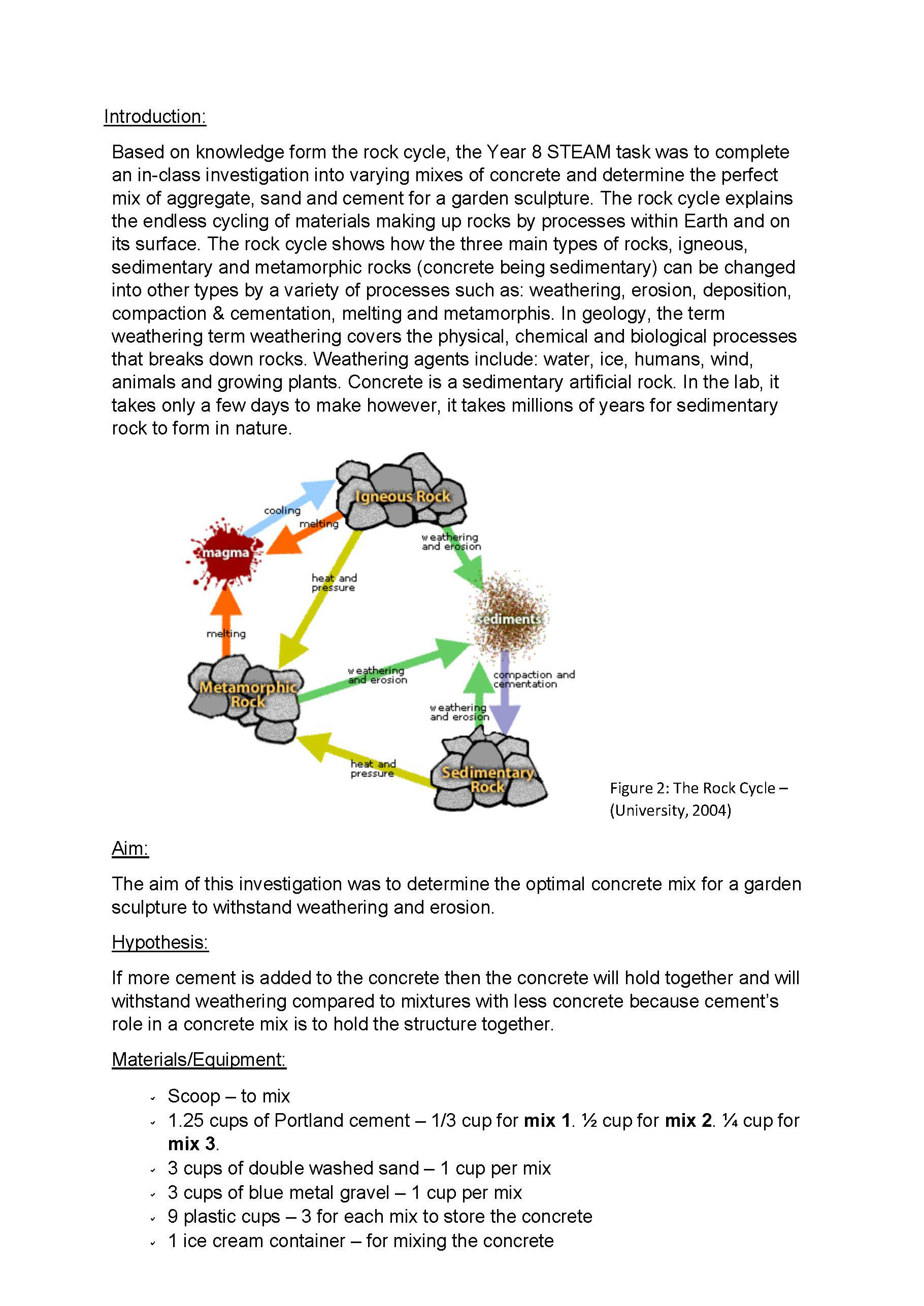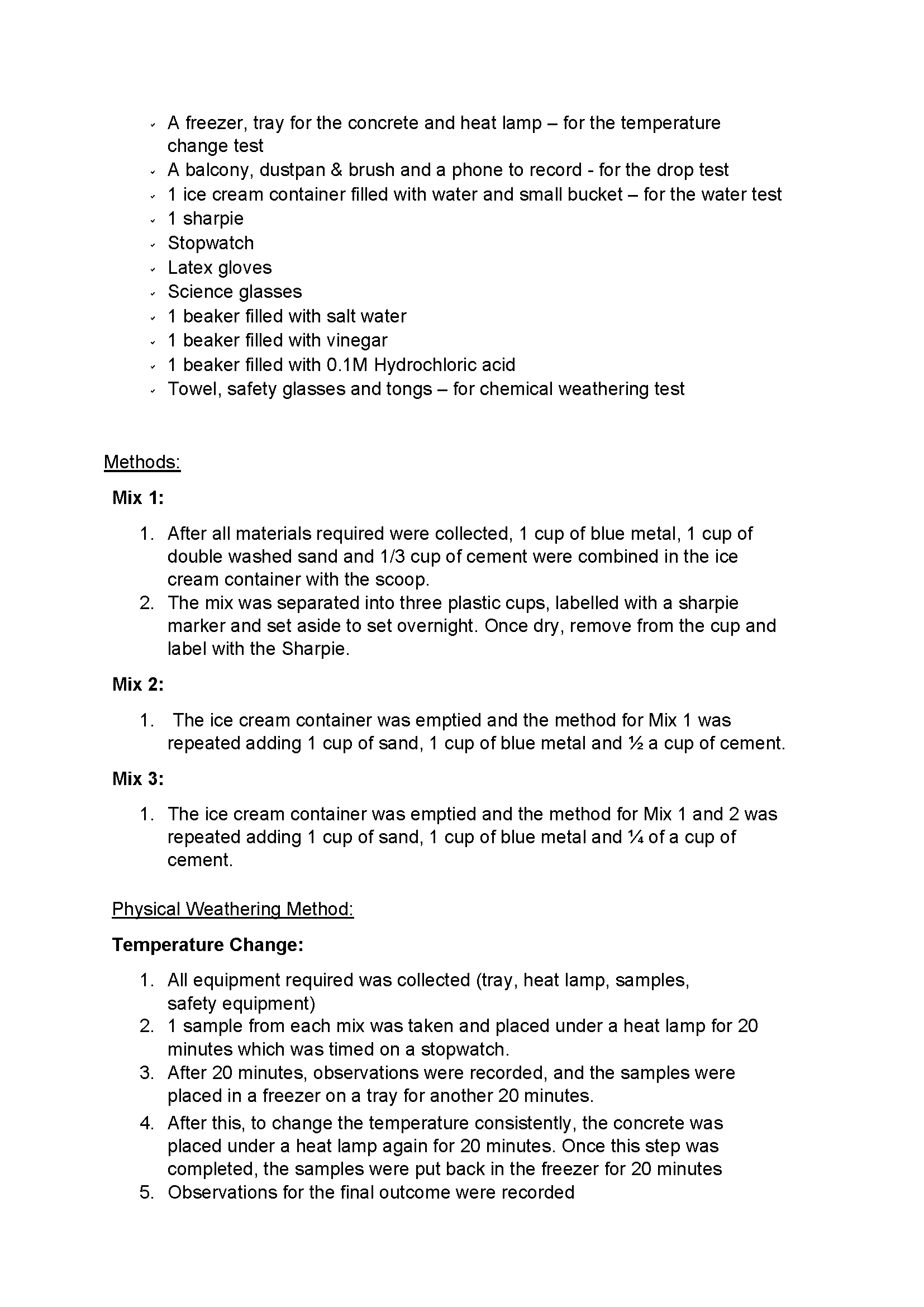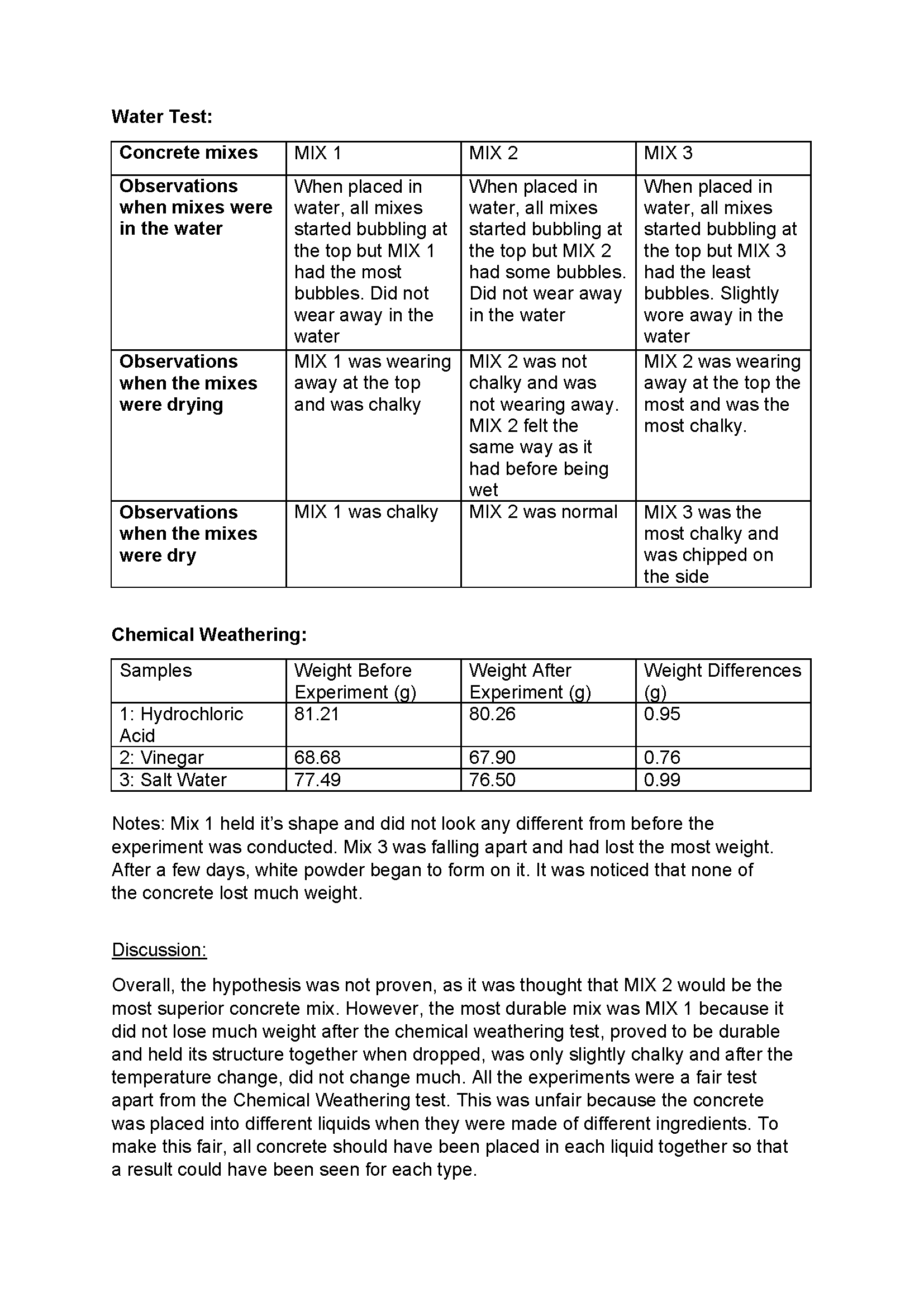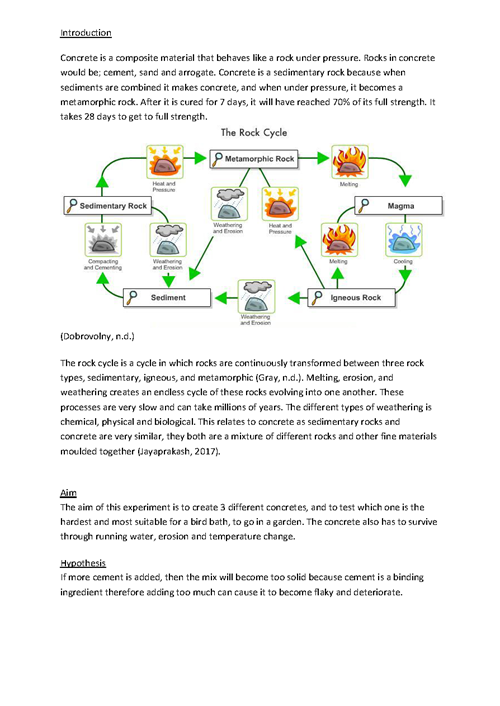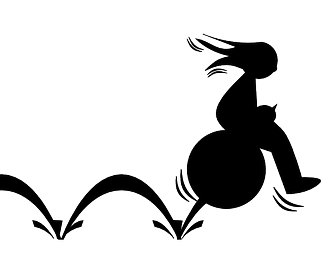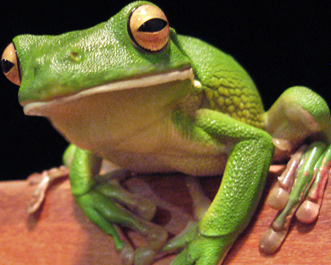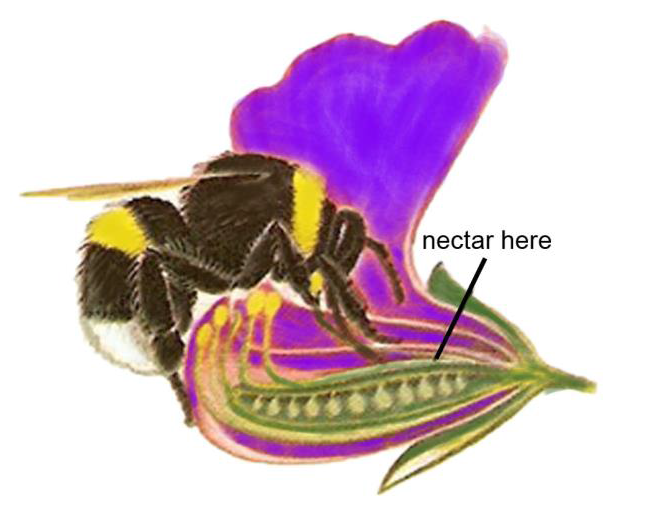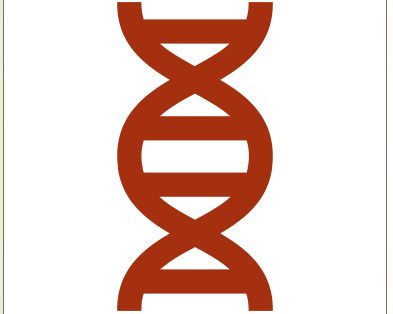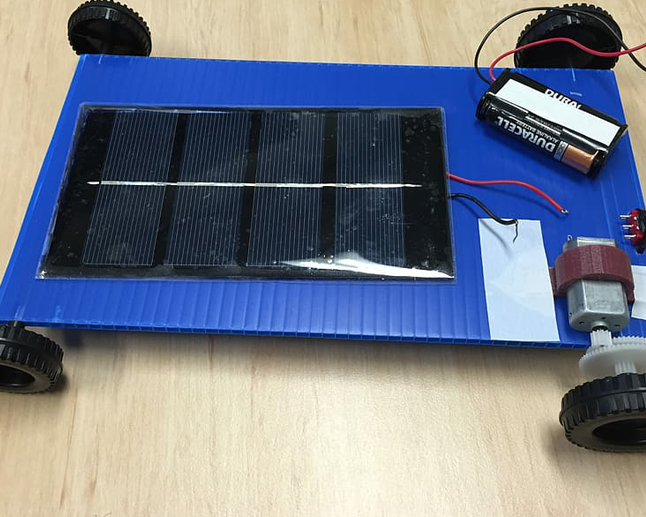Concrete sculpture
Summary of task
In prior learning activities, students learnt concepts and performed experiments relating to chemical and physical changes. They had performed a research investigation into the rock cycle with a particular focus on the processes of weathering and erosion.
This task was a component of a cross-curricular STEAM project in which students were asked to design a garden sculpture to be placed within the school gardens. They were to create a model of the sculpture and pitch their idea to a panel for consideration.
Prior to creating the sculpture, students needed to find the best mixture of aggregate, sand and concrete to be used as building material. Students were asked to design and conduct tests that would replicate weathering and erosion processes using different concrete mixtures of their choice. As summative assessment, students were asked to submit an investigation report that detailed students’ experimental designs, results and conclusions regarding the best concrete mixture. Students were also asked to demonstrate their understanding of how concrete used as building material relates to the natural rock cycle.
Students were provided with scaffolds to complete during the research and design phases to encourage a firm understanding of the concepts of a fair test.
